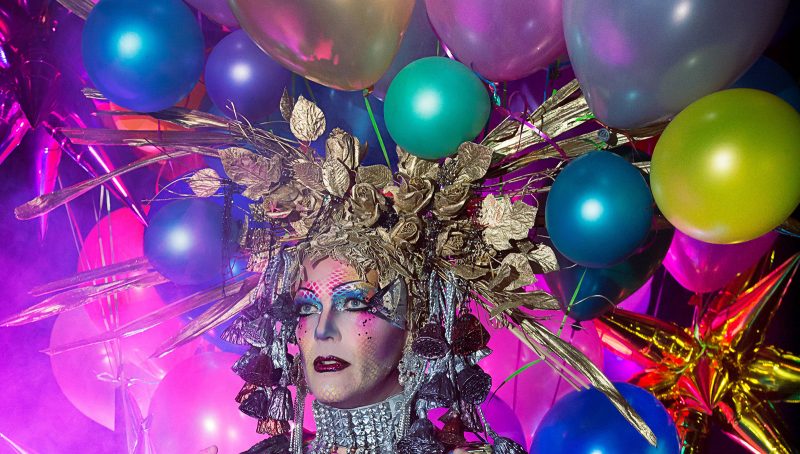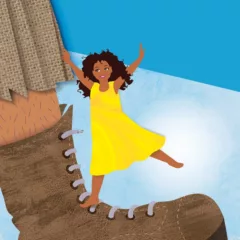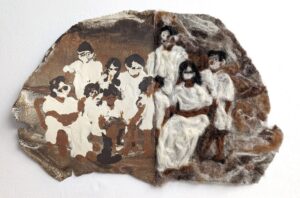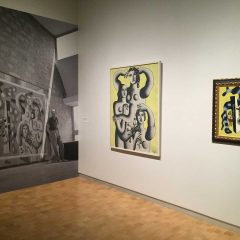Two weeks ago, I had a phone call with Machine Dazzle, a NYC-based costume designer known for his vivacious and unhinged outfits. His most liberated process, by far, has been working on A 24-Decade History of Popular Music — developed and performed by theatre artist and playwright Taylor Mac. The piece will tour here in Philadelphia at the Kimmel Center on June 2nd and 9th, in two 12-hour chunks.
As the name implies, audiences will be able to spend 12 – 24 hours, if they’re feeling bold, with Taylor Mac singing renditions of every single popular song from each decade of U.S. history between 1776 and 2018. I was pumped to meet Machine Dazzle, whose work feels like a perfect match for Taylor’s performance revelry.

Carl(os) Roa: It’s really cool to finally meet you. The first time I was ever exposed to your work was in Pig Iron’s I Promise Myself to Live Faster.
Machine Dazzle: Oh, that was so much fun.
(os): Yeah, it was! Now you’re back in Philly again, bringing your designs to Taylor Mac’s show at the Kimmel. What has it been like to work with Taylor?
MD: Taylor isn’t afraid of losing control of himself, or his image. We’ve been collaborating for so long, his image is basically what I make for him. I’m not a regular costume designer – I’m an artist. These days, when I’m invited into a project, I have to make sure there’s room for a layer of art that may or may not have anything to do with the actual story that’s going on. I’m adding a whole other layer of stories and interests, and that’s important to me.
(os): What are some of the differences between this collaboration and a more traditional one?
MD: I’m very fortunate to work with Taylor because I’m allowed to bring my full expression into the room. He does not give me directions — he’s very magical in that way. When I’m dealing with a director, I’m dealing with the personality, and they want something a little more specific. Even though they want the Machine Dazzle, they can’t necessarily handle it.
(os): My understanding is that you sometimes use found objects in your costumes. What is it about an object that sticks out to you or catches your eye?
MD: I’m a very instinct-based artist. Sometimes I resonate with certain materials. Sometimes I find something and I really love it, and I’m inspired by it, but I don’t know where it goes. Hopefully it’ll find a place, to justify my hoarding tendencies.
(os): Was there ever a moment where you said to yourself: “Wow, I can’t believe I used this in a costume, but it worked”?
MD: The opening costume [in A 24-Decade History], for one. I was walking in Brooklyn one day, and there was this laundromat there. You know those plastic and mylar flags that they have hanging outside for grand openings? They have those basic triangular ones and they also have those shiny mylar fringe ones as well. They were taking them down, and they were just so touched by the sun and weathered, and I said, “Wow, are you throwing them away? Can I have them?,” and they said “yeah.” I took them out of the garbage, and had them for a couple of years before I turned them into costume elements for Taylor’s opening number.
All of my costumes have concepts: “Betsy Ross had an illegitimate child who moved to New Orleans and opened a laundromat called the Washerie.” It then became the “grand opening” of America after the American Revolution. But “the Washerie” wouldn’t have happened if I hadn’t found these flags outside of an actual laundromat — and the fact that they were celebrating a grand opening. [America] was already a destination, but now it’s official! The flags have a tattered look to them, some of them are falling apart. I don’t replace them and I don’t try. I think it’s important, that idea of, “oh, wow, an opening of a show and it’s already tattered because it has a history.”
(os): Aesthetically, how are your costumes for this show influenced by your research on historical fashions?
MD: I will say that I was very inspired, and that I learned a lot over the course of the show. Some things worked really harmoniously and some things were kind of splotchy! The Civil War costume came together beautifully, but with the Reconstruction costume there’s no real melding of ideas — Taylor’s just wearing a bunch of shit. “The typewriter was invented, so here’s this typewriter top that’s really funny.” “Dynamite was invented, and the toilet paper roll was invented”… so there are just these funny ideas everywhere.

(os): Let’s shift gears. How does being a part of queer communities inform your work?
MD: Well…I’ve identified as a gay, homosexual person since I came out to myself. I was very isolated; I really didn’t have friends, and I knew that I was different and knew somehow that it wasn’t okay. I was in my head a lot, like, “art class is my favorite one.” I had my own little paradise where I was imagining all these things. I think I really exercised that muscle for make-believe and fantasy, so from an early age, I was able to be a creator.
As I got older, I realized that I felt just as isolated in a lot of mainstream gay spaces too, because I’m not a “typical” gay person. I’m not interested in pectorals and abs. I could care less about waving a flag. I realized, “oh, I’m really more of a queer person.” I’m a radical thinker. My sexuality has nothing to with me being a radical thinker — or maybe it’s all a part of it. Not only am I gay, but I’m queer. I think outside the box, I’m not gonna conform, and I don’t accept the status quo.
I’m a self-taught costume designer. I’ve never taken a sewing class. I taught myself how to do it. And that definitely shows in my work — it’s rough. Some things are beautiful, I take my time, and I sew them properly. But sometimes, [Taylor] is wearing objects! I think my radical self, my fuck-all attitude about certain things comes out in my work. Some of it is very trashy and punk, some of it is very poetic and romantic. He’s wearing art. It happens to be a costume, but it’s art as a wearable sculpture.
(os): If you could design a look for anyone, living or dead, who would that be?
MD: Hmm…God…who? (pause) I love the idea of designing something for Tina Turner. She’s so great – she’s the mother of rock n’ roll, what a fabulous life!
(os): My final question for you is the hardest one: If your work had a message to the world, what would that be?
MD: Oh, God! (chuckles) If you can’t give the world anything else, give them the truth about who you really are.
A 24-Decade History of Popular Music, will run in two 12-hour installments on June 2nd and June 9th. For tickets or more information about the unique event, visit the Kimmel Center website.









